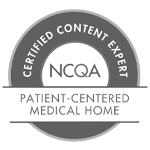 March is Colorectal Cancer Awareness Month. Also known as colon cancer, this disease is one of the most commonly diagnosed cancers and is the second leading cause of cancer-related deaths in Pennsylvania and the United States.
March is Colorectal Cancer Awareness Month. Also known as colon cancer, this disease is one of the most commonly diagnosed cancers and is the second leading cause of cancer-related deaths in Pennsylvania and the United States.
The good news is, many of these deaths can be prevented by being proactive. Gregory Gibson, Certified Registered Nurse Practitioner at Keystone Internal Medicine, shares information about the disease, including what signs to look for and what testing options are available, in today’s Take Care article.
What is colorectal cancer?
Colorectal cancer (CRC) is a common and potentially fatal disease. Cancers are cells that overgrow and begin to invade other parts of the body, and this is a cancer that affects the lower part of the digestive tract. There are nearly 150,000 new cases reported each year with approximately 51,000 deaths yearly from this disease. This cancer can affect both sexes but it does affect men more than women. Environmental and hereditary factors are both contributors to a person’s risk for colorectal cancer.
What are some warning signs and symptoms?
Signs of colon cancer include changes in bowel habits such as diarrhea or constipation or other changes that last for more than a month. Bleeding from your rectum or blood in your stool is another possible sign of CRC. Other symptoms can include persistent abdominal pain or a feeling that you cannot completely empty your bowels when you go. Weakness, fatigue, unexplained anemia and unexplained weight loss may also occur but are less specific signs.
Who should be tested, and what testing methods are available?
The United States Preventive Services Task Force recommends that everybody over the age of 50 should be tested for colorectal cancer, and screening should continue until at least age 75. The US Cancer Society has suggested that screening should begin at age 45. People with a family history of colorectal cancer, inflammatory bowel disease (ulcerative colitis or Crohn’s disease), history of radiation treatments to the abdomen or pelvis, Lynch syndrome or familial adenomatous polyposis should consult with their primary care provider to see if screening should begin sooner.
There are several different options for screening of colorectal cancer. There are multiple stool-based tests that may be performed in the privacy of your own home such as FIT, FIT-DNA, and gFOBT. These tests need to be performed every year except for the FIT-DNA which may be performed every one to three years. These methods offer the advantage of not having to have any anesthesia and not requiring bowel preparation before being performed. Patients may also have a sigmoidoscopy performed every five years or colonoscopy performed every 10 years. Advantages of these tests are that they have to be performed less often, and during the screening some issues can be addressed without additional procedures. The disadvantages of these tests are that they require anesthesia and bowel prep before the procedure.
Why is it important to not put off screening?
The reason to not put off screening is because colorectal cancer does not always have signs and symptoms in the earlier stages or when it is just a precancerous polyp. Screening tests allow providers to find these abnormalities earlier and treat them before they have a chance to spread to other parts of the body. It is a missed opportunity to not screen for this cancer because we cannot screen like this for every disease. Screening has proven to be very effective over the past few decades at decreasing mortality rates from colorectal cancer.
Even if the screening may seem unpleasant to you, I assure you it is a much better alternative of finding you have colorectal cancer because you have not had any screening. Some of my own family and friends are still here with us today because of early detection. This allowed them to begin treatment early and they have overcome this diagnosis. They are still with us 20 years later.
What are the benefits of early detection?
If colorectal cancer is detected before it spreads to other parts of the body, the survival rate over a 5-year period is 90%. The mortality rate of this disease has decreased steadily since the 1980s partly because of the early detection of cancer through screening. Colonoscopies in particular are very useful. Not only do they detect colorectal cancer but they can see and remove growths, and biopsy them before they cause problems. The mortality rate for colorectal cancer is much lower when detected early.
We do preventative maintenance and screening on our cars, so why would we not do it for ourselves? Prevention is always preferable treatment. People need to play an active role in their healthcare. Your provider can make suggestions but unless you are an active participant in your healthcare and participate in screenings, disease can only be reacted to instead of prevented.
This article contains general information only and should not be used as a substitute for professional diagnosis, treatment or care by a qualified health care provider.




